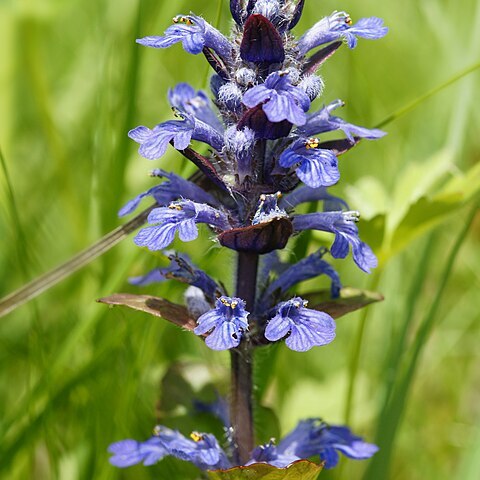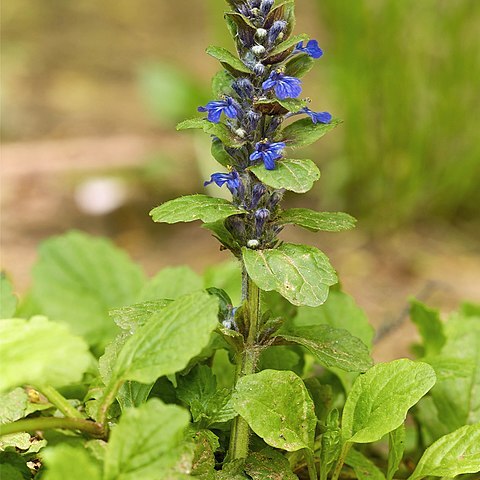Annual or perennial herbs. Verticillasters (in Mal. sp.) many-flowered, axillary or in terminal leafy spike-like inflorescence. Calyx usually 10-nerved; teeth 5, subequal. Corolla exserted; tube often annulate within; limb 2-lipped, upper lip usually very short, 2-fid, lower lip long and spreading or slightly concave, 3-lobed, midlobe the largest, often notched at apex. Stamens 4, in 2 pairs, ascending, exserted; anthers 2-celled, divaricate, often confluent at length. Disk equal-sided or produced behind. Ovary shortly 4-lobed; style 2-fid at the end, arms subequal. Nutlets elliptic or obovoid, reticulate-rugose; scar very large, lateral.
Annual or perennial herbs, sometimes stoloniferous. Lvs simple, entire to deeply lobed. Verticels axillary or aggregated into terminal spikes. Bracts leaflike or reduced. Calyx ± actinomorphic, 5-toothed, 10-or more-nerved, tubular-campanulate, not gibbous at base. Corolla with upper lip often very short, usually 2-lobed; lower lip deeply 3-lobed; tube ± exserted, with ring of hairs inside. Stamens usually exserted. Style not gynobasic, equally 2-branched. Nutlets reticulately veined or transversely rugose.
Cal-lobes subequal, about as long as the tube; upper cor-lip very short, 2-lobed or entire, the lower lip elongate and dilated, its lateral lobes shorter and narrower than the broad, shallowly 2-lobed median segment; stamens 4, unequal, shorter than the lower lip; ovary rather shallowly 4-lobed, the style arising between the lobes; herbs, usually with toothed or lobed foliage lvs and medium-sized fls in whorls of 2–6 + axillary to bracteal lvs, forming a terminal leafy spike. 40, Old World.


